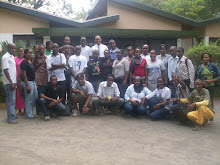Participatory Forest Management (PFM) refers to processes and mechanism that enable those people who have a direct stake in forest resources to be part of decision making in all aspects of forest management, from managing resources to formulating and implementing institutional framework.
Deforestation occurs for many reasons, trees or derived charcoal are used as or sold for fuel or as timber while cleared land is used as a pasture for livestock, plantations of commodities and settlements.
This removal of trees without sufficient reforestation has resulted in damage to habitat, biodiversity loss and aridity. Ignorance, lack of sustainable forest management skills and poorly implemented environmental laws are some of the factors that contribute towards deforestation in Tanzania and other developing countries.
Following the 1998 National Forest Policy and Forest Act of 2002, Participatory Forest Management is being introduced in Tanzania. Participatory forest management has two key objectives; to reduce forest degradation thereby increasing ecosystem services and to improve the live hoods of local villagers.
The Forest Act, 2002 provides a clear legal basis for communities, groups or individuals across mainland Tanzania to own manage or co-manage forests under a wide range of conditions. There are two types of participatory forest management that are recognized by the law in Tanzania, i.e. Community Based Forest Management (CBFM), and Joint Forest Management (JFM).
Under community forest management, the law enables local community to declare and gazette village, group, or private forest reserves. This takes place on village land and private land. The ownership of trees is on a village council i.e. a village natural resource committee, a group or an individual. Any costs, benefits, utilization are carried out by the owner in the community based forest management.
Under JFM, the law allows communities to sign agreements with the government and stakeholders. This mainly takes place on reserve areas whereby land is owned by local government or central government. The villagers enter into management agreement to share responsibilities for the management with the forest owner.
Participatory forest management improves natural capital through regulate forest utilization and brings up the possibility of sustaining benefit flow more than non-participatory forest management situation where natural resources is threatened.It contributes to poverty reduction by providing rural people with a sustained stream of net benefits greater than those obtained under non- participatory forest management.
However, PFM does not support an equitable distribution of the benefits and costs involved forest conservation and management i.e. poor are excluded from realizing the full suite of benefits offered by participatory forest management.
Challenges remain with respect to communicating the new forest policies if the objectives of participatory forest management are to be achieved. Villagers as a group are less well informed than other stakeholders, and their knowledge is often in accurate.
Deforestation may not be reduced as much as anticipated without alternatives sources, villagers often continue to cut down trees for charcoal and fire woods in the protected forest. Thus, need for alternative source is crucial fact so as to achieve the main objective of participatory forest management.
Mismatches in perception are identified that could lead to difficulties in implementing participatory forest management. Some people have different perceptions towards participatory forest management due to the fact that it has a long term effects on socio-economic aspects, and this bring ups difficulties in implementing it.
Although, participatory forest management facing challenges, but can also help to curb down deforestation thereby developing positive attitudes towards it and improve the inter relationship between the stakeholders and the government, the institutionalized and joint efforts of all the stakeholders are essential.
Written by; Josephine Mbago-YET 2011
Subscribe to:
Post Comments (Atom)


No comments:
Post a Comment